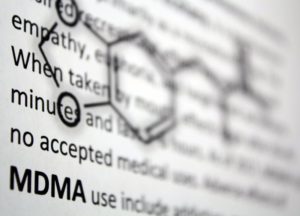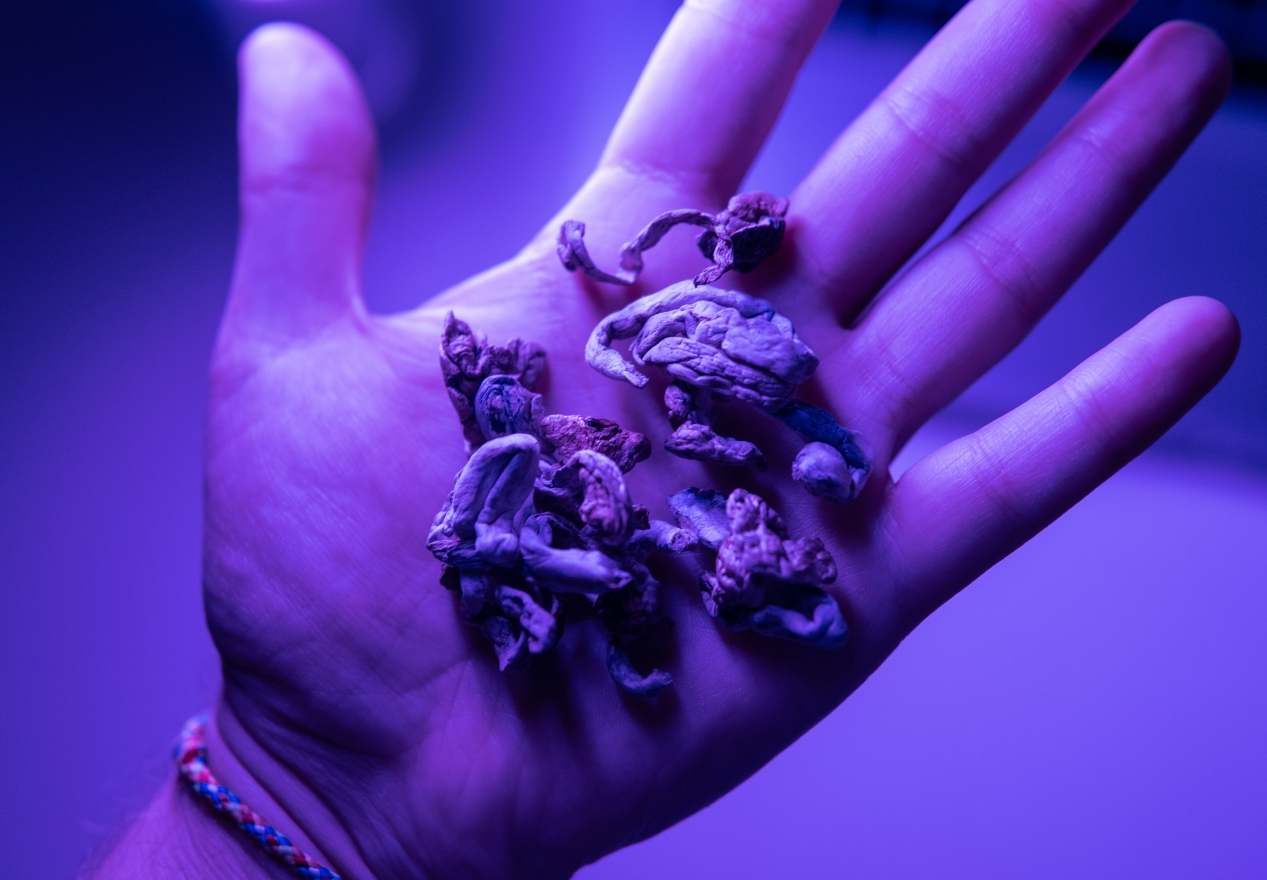With the new legislation surrounding Psychedelics and the popularization of many substances within the clinical realm, various questions occur surrounding psychoactive substances.
Questions such as:
- What is LSD?
- What does it do?
- How does one feel while they’re on LSD?
In this article, we will present you with seven psychedelics, their effects, and the history behind each of them.
Psilocybin, LSD, and MDMA
The rise and discontent of the prescription medicines used in the treatment of mental illness have brought to light the historical use of substances such as Psilocybin, LSD, and MDMA. These substances have in fact been used and reported to be therapeutically valuable thru the era of the ’60s, also known as the Psychedelic golden era.
MDMA, LSD, and Psilocybin both are metabolized in the stomach and work their way up to stimulate the 5-HT2A receptor, a subtype receptor that belongs to the Serotonin family.
 History of MDMA and its Effects
History of MDMA and its Effects
The synthesis of MDMA was rediscovered by the well-known, Alexander “Sasha” Shulgin, also known as the Godfather of MDMA that later would be named in the streets as Ecstasy.
Shulgin proceeded to give samples of the substance to psychiatrists friends during the 80’s as he believed that the substance would have good use in the clinical world. It gave patients general compassion, euphoria, prosocial behavior, and a sense of well-being.
These effects are an amazing tool to explore emotions. For the same reason, it has been used by psychologists and their patients as a tool to open up and speak freely about their issues as well as feeling more compassion towards them. The use of the substance did incredibly well, so well that it began to be used outside therapy rooms and became the spotlight in various parties across the world, providing various hours of dancing, and prosocial behavior.
On the other hand, LSD and Psilocybin have a more reflective effect, as both substances, have more visual effects.
History of LSD and Its Effects
LSD is a synthetic psychedelic and it was firstly synthesized by Albert Hofmann on April 19th, 1943, a date is nowadays known as the Bicycle Day. Hofmann’s discovery was found by accident, as the substance was absorbed by his skin. Hofmann began feeling slightly dizzy, restless, and proceeded to go home with his bike.
While riding his bike he began to have hallucinations of intense kaleidoscopic figures, a various spectrum of colors as well as some intense shapes. This day was then marked to be the discovery of LSD and the mark of an amazing ride home.
 History of Psilocybin and Its Effects
History of Psilocybin and Its Effects
Psilocybin is the active compound in the Psilocybe genus, after consumption, the drug is instantly turned into a highly psychoactive substance, Psilocin.
The use of these mushrooms was popularized by the ethnobotanist, Terence Mckenna in his book Food of the Gods. However, the use of the mushroom can be traced back to tribal societies and have been documented for hundreds and potentially thousands of years. Mckenna would go as far as saying that psilocybin caused the primitive brain to evolve to what it is today.
While under the effect of these mushrooms, the users usually feel visual and auditory hallucinations, an alteration in the sense of time, and a feeling of well-being. For this reason, a huge movement of micro-dosing these mushrooms, micro-doses usually aren’t enough for people to feel the hallucinatory effects, but only feel the well-being effects, having a great use in mental diseases such as depression and anxiety.
DMT, Kratom, Mescaline and Salvia Divinorum
DMT and Salvia Divinorum are other prime examples of the influence of Terrence Mckenna and his history of having hallucinations with Machine Elves.
History of DMT and Its Effects
DMT can be both synthetic, in form of white or yellow crystals as well as Botanical in form of Ayahuasca or the smokable form Changa.
The botanical forms can be traced back to the earliest aboriginal inhabitants of the Amazonian basin. They use it in ceremonies, to communicate with spirits, healing rituals, and magical experiments. Once a user consumes DMT, often is presented with short but vibrant and constant visuals lasting for about thirty minutes, inheriting the nickname, the businessman’s trip.
History of Salvia Divinorum and Its Effects
Just like DMT, Salvia Divinorum can be smoked in its botanical form. By smoking the leaves often sold in packets as X10/ X20 and X50 regarding their potency, and by smoking the extracted crystals of its main alkaloid Salvinorin-A.
The use of the plant comes from the Mazatec and is still used in parts of Mexico, as a ritual as well as a tool to heal spiritually. When it’s smoked, Salvia provides the user with mild visuals, an uncontrollable laugh, often users report visuals so realistic that they tend to run from their own environment.
 History of Kratom and Its Effects
History of Kratom and Its Effects
Kratom is a Thai plant from the family of coffee. The plant has been used in Thailand by latex farmers to relieve their pain. The plant had a major impact in the United States as it was substituting various opioid-based prescribed medicines for chronic pain.
When using in lower dosages the plant has a stimulating effect similar to coffee, however, once the plant is consumed excessively its counterpart shows and effects such as sedation, drowsiness, and dream-like effects may occur.
History of Mescaline and Its Effects
Mescaline is commonly found in the Peyote and the San Pedro cactus. It is used majorly in Mexico, for their ritualistic beliefs as well as to treat patients.
Whether spiritually or physically, Mescaline can be consumed as a tea, made from the San Pedro cactus, eaten in the case of Peyote, and can be found as a crystal. The substance can cause slight visual effects, a feeling of a dream-like state, changes in perception as well a feeling of positivity and happiness.
Final Thoughts
With this information being given psychedelics must be taken cautiously minding the set and setting and most importantly the dosage and the purity of the substance as these factors can take part in what defines a good trip from a bad trip, as well as provide safety to the user.





No Comments